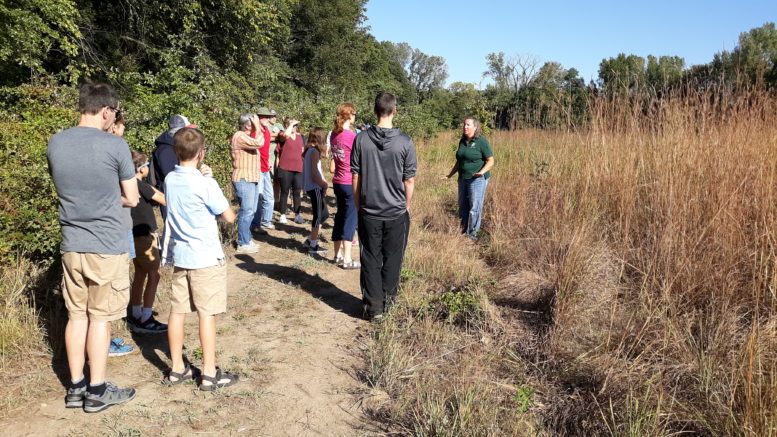By JAN LARSON McLAUGHLIN
BG Independent News
Bowling Green residents turned to the city parks for a lifeline during the COVID pandemic. Now the city is turning to voters to help preserve those parks.
City voters will cast ballots in the General Election on a 2-mill replacement levy for the city’s parks and recreation programs.
According to the National Recreation & Park Association, the typical community park system has 9.5 acres of parkland per 1,000 residents. Bowling Green exceeds that – with 12.4 acres for every 1,000 residents.
With 393 acres, 11 parks, and the community center, there is a park within 1.5 miles of every resident of the city.
“The 11 parks are always here – 365 days a year. I do think that COVID really brought that to light,” BG Parks and Recreation Director Kristin Otley said. “People realized, really realized that parks enhance the quality of life.”
“This is where they can go, where they feel safe,” she said. “We really proved how essential we are. It really solidified that parks and rec services are essential.”
But maintaining those parks takes money.
Thirty percent of the parks and rec revenue comes from fees. “The parks themselves are free,” Otley said.
So when the fees dried up during COVID closures, the parks relied more heavily on property tax revenue. The current property tax levy and the percentage of city income tax dedicated to the parks normally makes up one-third of the parks and recreation revenue.
The Parks and Recreation Department has no expansion or building plans in the next five years – it just wants to preserve what it already has.
“Preserving green space is obviously important,” Otley said. “You can have all the parkland that you want, but if it isn’t maintained, it’s of no value.”
The replacement levy will help the parks and rec department care for acreage and structures it already has in place.
“This money is operational to take care of what we have, and do what we are doing,” she said. “We really feel like we do a lot with the support we get.”
If passed, the owner of a $150,000 home will pay an additional $20.05 annually for the levy over the next five years.
“It’s a very minor impact to the taxpayers, but a big help for the parks,” raising an additional $151,000 a year, Otley said.
The current 2 mills bring in $954,225 a year for the city parks and recreation programs, with the owner of a $150,000 home paying $79.27 a year. The replacement levy with the same millage will generate $1.1 million.
Bowling Green voters have traditionally been strong supporters of park levies when they appear on the ballot.
The last time a parks and rec levy was on the Bowling Green ballot in 2016, it was a brand new levy – asking voters to support an increase to 2 mills from the previous 1.6 mills that had been in place for 15 years.
Even with that increase, the levy passed with nearly 70% of the votes.
Otley is hopeful voters – who flocked to the parks during the pandemic – will again show their support this November.
“They understand the essentialness of what we do,” she said.

